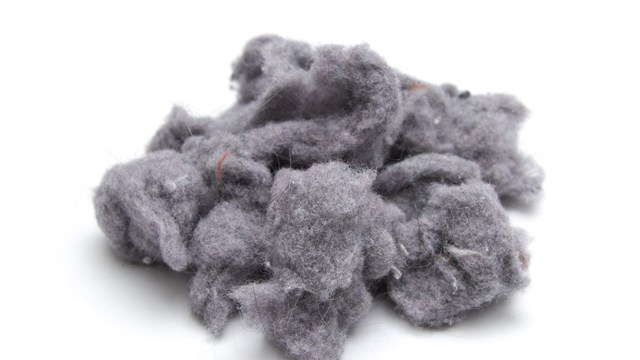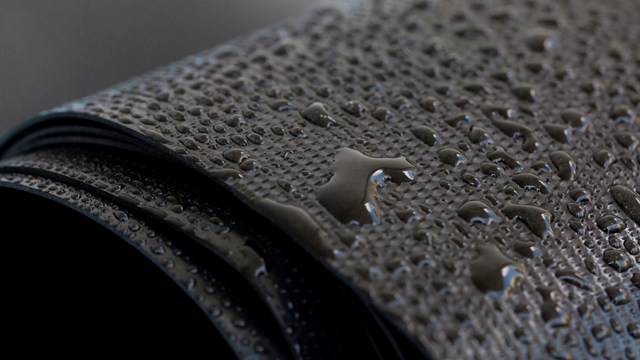Common areas are among the most heavily trafficked places in your building or community, so it’s no surprise that these areas are prone to a great deal of damage and wear-and-tear over time. But regular upkeep, scheduled maintenance and proper cleaning will help ensure that common areas don’t become dingy, dirty or even possibly hazardous to people’s health.
High Traffic
Common areas such as hallways, lobbies and laundry rooms are the most prone to wear simply due to the number of people who pass through them every day.
“The biggest enemy is the degree of dirt and grit and soot brought in from the outside on the shoes of people going into the building. An aggressive campaign of walk-off mats at any entrance that are regularly changed out and cleaned at least monthly would help greatly in the longevity of the carpet,” says Todd Saunders, president and CEO of Cleaning Specialists of America, Inc. (CSA) in Long Island City in Queens, New York. “That goes for hard stone, wood, anything. Dirt gets ground into anything and will mat down carpeting.”
Floors are also damaged from scuff-marks from foot traffic, says Saunders, adding that in most buildings, routine maintenance and upkeep are left to the porter or super. In lobbies that have a hard surface for flooring—such as granite—building staff typically handle daily cleaning and removal of dirt, while a professional company will be brought in to handle deeper scratches and to buff and polish the entire floor a few times a year.
Keeping Carpets Clean
Certain types of carpeting withstand wear and tear better than others. For high-traffic areas, commercial carpeting will stand the test of time.
“A commercial grade carpeting is the best thing to use,” says Jillian Philipp, president of Affordable Quality Cleaning, LLC in Freehold, New Jersey. “It’s not as thick as a shag or a Berber that you would have in your house… if there is stain then it’s easier to remove with carpet cleaning” because the fibers of commercial carpeting are shorter and more durable than typical carpeting.
If not regularly cleaned, carpeting is prone to staining and can trap dirt that’s tracked in. One of the biggest factors contributing to carpet wear is lack of maintenance. According to the experts, most buildings don’t keep professional-grade carpet cleaning equipment on-premises, so it’s important for them to act fast to prevent stains from getting ground or set-in while they wait for the pros to arrive. If something gets spilled on a carpet and soaks in deeply, the stain may wick back up the fibers to reappear a day or two later if only the top layer of the fibers was cleaned. To take care of stains immediately, the pros advise arming your building staff with a universal spotter.
In addition to spot cleaning and taking care of stains or spills right away, carpeting needs to be periodically deep cleaned.
“Carpeting should be deep cleaned at a minimum every six months. That’s on the heels of an aggressive vacuuming campaign,” says Saunders. “Nothing beats an aggressive vacuuming program. It’s best to vacuum daily or at least every other day. Vacuuming should be done with a dual motor vacuum that has one motor for the vacuum and one for beater brush. The [brush] lifts and moves the pile, allows enhanced extraction of dirt particulates and raises the pile. It allows the carpet to wear more evenly.”
The professionals agree that vacuuming of carpets is essential, and that carpets in higer-traffic areas should be vacuumed two to three times per week and should be professionally cleaned twice a year: once in the fall, in preparation for winter slush and salt, and again in the spring, to get all the grit and crud out of them after the long winter.
“If you have a high-rise building and you want to keep it [clean,] you should probably vacuum it everyday. Or at least, three times a week,” says Philipp.
Cleaning Walls and Wall Coverings
Cleaning experts also advise that walls, wall coverings and drapes in common areas be cleaned on a regular basis. Drapes and valances can be sent out for cleaning, and those next to radiators or air vents may be especially prone to smudges and linty build-up.
For walls in high-traffic areas, a semi-gloss paint should be used, as it is much easier to clean than a flat paint. Wallpapers can also be cleaned in some instances, depending on the type of paper used. Vinyl wallpaper, for example, can simply be cleaned with warm, soapy water. In addition, many wall coverings now come with built-in protection in the form of chemical stain resistance or non-stick surfaces that repel smudges and scuffs.
If your walls become scuffed or badly scratched however, the damage might be harder to get rid of than a more superficial smudge, and might require patching a hole or even replacing a panel. Depending on the extent of damage, you might need a professional cleaning service to come in and handle any repairs, replacement or general cleaning.
“If it’s couple of spots on the wall, the super can try to handle it. If it’s more than that, it’s usually more of a pervasive issue that requires a thorough cleaning of the space. You should have wall coverings cleaned every few years at least. This is not just for appearance, it’s also for health. If you don’t have a well-maintained maintenance program in place, everything starts to degrade in both appearance and longevity,” says Saunders.
Cleaning Green
One issue that has come to the forefront in recent years is that of environmentally sensitive cleaning products. While years ago there might have been one or two alternatives to the usual arsenal of bleach, ammonia, and lawn fertilizer, today there are scores of products designed to be gentler, both on the surfaces they treat and the people who use them.
The new generation of cleaning and maintenance products includes citrus-based and corn-ethanol-based cleaners, eucalyptus oil-based deodorants, all-natural polishes, non-toxic disinfectants and insecticides and fragrance-free cleaners.
But even with the promise of something new and better, it’s important to keep in mind that it’s not likely the association’s manager or board members who will be using the allegedly new-and-improved products every day. If a new product is too messy, too complicated, or too caustic to be practical on an everyday basis, maintenance staff will likely go right back to using the old stand-by, and the new product or equipment will go to waste.
Professional Cleaning for Air Ducts
It might not be as visible as flooring and wall coverings, but ductwork is another area that needs to be regularly monitored and cleaned. However, this type of work requires professional cleaning service.
“Our services include trash chute cleaning, air duct cleaning, dryer exhaust cleaning. Our products include compactors, trash chutes and hopper doors and we are NADCA certified,” says Craig Berlin, owner of ChuteMaster Indoor Environmental Services, a national provider of indoor environmental services and products, in Union, New Jersey. ChuteMaster gets called in for both routine maintenance, such as trash chute and dryer vent cleaning, and larger projects such as compactor replacements and whole building air duct cleaning. Like floors and walls, ducts also need to be cleaned regularly.
“Most buildings are already on a regular schedule for services, but the habits of the residents may make an additional service necessary, especially around holiday times,” says Berlin. “We take calls from buildings when they visually or through odor suspect that the building requires cleaning.”
According to Berlin, air ducts usually leave a residual trail of dirt on the vent covers or registers. This is the first indication that a cleaning is in order. Cleaning is important, because obstructed lines can sometimes lead to a fire.
“Dryers that don’t dry as quickly as they should, or dryers that run extremely hot to the touch, might be signs that there is an obstruction in the dryer vent lines. Severe build-ups in these lines may present a dryer fire risk, which is becoming all too common. Most buildings are on a regular schedule of dryer vent cleaning, including all parts of the exhaust through the building and outside of it,” says Berlin.
One sign that your ducts are due to be cleaned is if you can smell odors in the hallways. “Odors from dirty trash chutes can permeate a building very quickly and thoroughly. If you can smell the trash chutes in your hallways you are overdue for a cleaning,” says Berlin.
Making sure the air is properly flowing and your building properly ventilated are key in creating a comfortable living and working environment.
“Smart building managers realize that the smell as well as the visual cleanliness contributes to the first impression that a potential resident may have of a building, and that even the finest building can be judged by hallway odor or the stuffiness that accompanies some hallways. Proper air flow and cleaning allow the building to ‘breathe’ and present a truly well maintained building. This provides a positive reflection on management and adds to the value of the building itself,” says Berlin.
Keeping common areas clean is essential, not only for aesthetic reasons, but for the health and safety of residents, staff or visitors. Your community’s staff should know how to tackle the day-to-day elements of common area cleaning. And professional upkeep and expertise will supplement your staff’s efforts in keeping common areas looking their best.
Stephanie Mannino is a freelance writer and a frequent contributor to The New Jersey Cooperator.







Leave a Comment